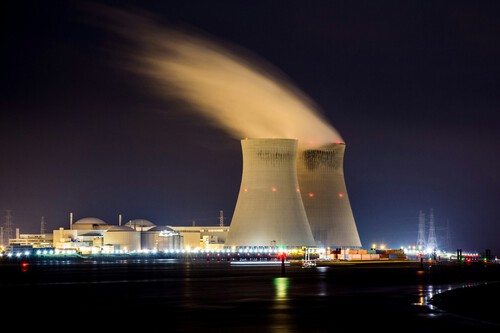On Feb. 28, 2022, just four days after the start of the Russian invasion of Ukraine, Russian President Vladimir Putin ordered shelling near the Zaporizhzhia nuclear power plant, located in the southeast of the country. Shortly afterward, during the night of March 3–4, Ukrainian and Russian soldiers fought next to the buildings of this nuclear facility.
This scenario has repeated several times since then, at times posing a threat to the integrity of the nuclear reactors at the plant. Unfortunately, the war in Ukraine isn’t the only conflict that has endangered nuclear facilities.
Over the past five decades, Israel has repeatedly bombed nuclear plants in Iraq, Syria, and Iran. According to the Israeli government, the strikes aim to prevent these countries from developing nuclear weapons. This same logic presumably triggered the latest episode of the Israel-Iran conflict on June 13.
However, not all nuclear facilities are the same. Israel and the U.S. claim that Iran’s Fordow, Isfahan, and Natanz plants, which they have recently bombed, house several thousand uranium centrifuges. These machines contain uranium hexafluoride (UF6), a corrosive gas that, if leaked into the environment, could trigger a radiological and chemical emergency. A nuclear explosion would not occur.
In any case, this article explains what could happen if a missile or other highly destructive projectile hits the containment building of a nuclear reactor.
Nuclear Reactors Can’t Explode Like an Atomic Bomb
The nuclear power plants used by many countries to generate electricity are designed for long-term safety and resilience. The first layer of protection is the containment enclosure, a watertight concrete structure that isolates the primary circuit from the environment. It is engineered to withstand expansion, earthquakes, and even large collisions, such as an airplane crash. This barrier not only protects the reactor from external aggression but also prevents radioactive material from escaping into the atmosphere. To damage a nuclear reactor, a missile or bomb would first have to breach this structure. Another essential component of a nuclear reactor is the cooling system. In fact, a reactor relies on three separate circuits.
The containment enclosure is designed to withstand major collisions, such as the impact of an aircraft.
The primary circuit includes the vessel, which holds the fuel rods and water. This water absorbs thermal energy and circulates between the vessel and a heat exchanger, with a pump facilitating the flow. Because this water is in direct contact with the fuel rods, it becomes radioactive and must remain contained.
The secondary circuit introduces cold water into the heat exchanger, where it boils upon contact with the hot primary water. The resulting steam powers a turbine before cooling and condensing back into liquid form. A pump returns the water to the heat exchanger, completing the cycle.
To condense the steam from the secondary circuit, cold water must enter the system—this is the cooling circuit. Water for this final circuit typically comes from the sea or a nearby river, which is why nuclear plants are often located near natural bodies of water.
The Most Severe Scenario Involves a Reactor Core Meltdown
The interaction of these three circuits allows for the safe production of electricity while maintaining the fuel rods at optimal temperatures. If the heat from sustained fission surpasses the system’s cooling capacity, the fuel could degrade. This phenomenon, known as core meltdown, could eventually allow radioactive material to escape the reactor. That, broadly speaking, is what happened at Chernobyl Reactor 4 in 1986. However, there are critical differences between the Chernobyl plant and today’s reactors.
One major difference is the lack of a containment enclosure at Chernobyl. This structure is designed to contain radioactive material in the event of a serious accident, such as a core meltdown. For example, Reactor 2 at the Three Mile Island plant in Pennsylvania experienced a partial meltdown in 1979, but the containment building limited the damage significantly.
A military attack poses a very different threat than an accident caused by technical failure or human error.
Modern nuclear power plants have redundant and auxiliary systems designed both to prevent accidents and to mitigate their effects. However, a deliberate attack presents a different threat than a technical failure or human error.
It’s reasonable to worry about the consequences of a missile strike on a reactor’s containment enclosure. For such an event to trigger a Chornobyl-like catastrophe, the projectile would need to breach this barrier. As noted earlier, these enclosures are built to withstand extreme forces. Additionally, the reactor vessel or heat exchanger would need to be damaged. Even then, a final line of defense remains: the plant operators.
Control room operators have auxiliary systems and resources that allow them to respond to emergencies. In the worst-case scenario—if the containment enclosure, cooling systems and auxiliary systems are all compromised, and operators lose control—a severe accident resembling Chornobyl could occur.
Still, a nuclear explosion would remain impossible. Reactors use uranium enriched to only 3% to 5%. In contrast, atomic bombs require uranium enriched to 90% or more, or plutonium. Thermonuclear weapons use uranium or plutonium only in the first stage, which triggers a fusion reaction using deuterium and tritium.
Image | Nicolas HIPPERT (Unsplash)




View 0 comments